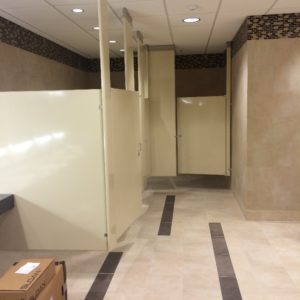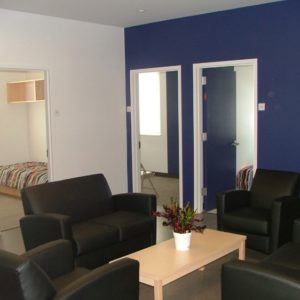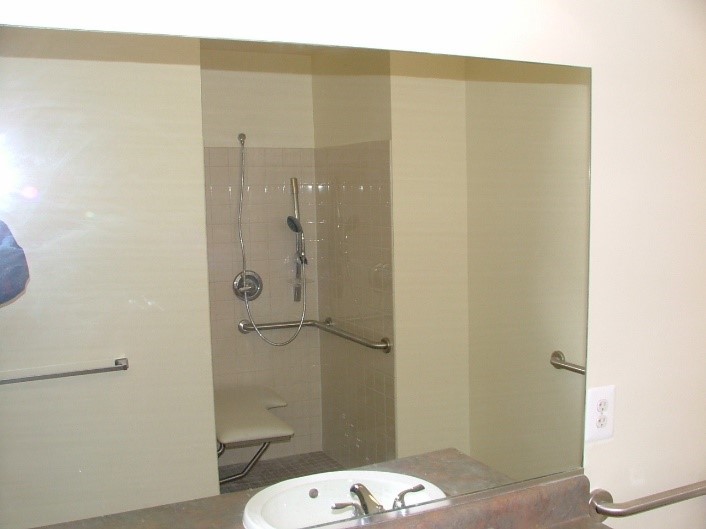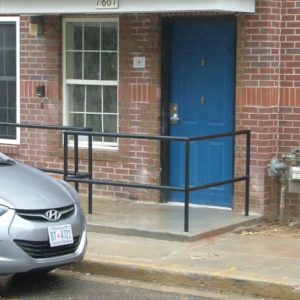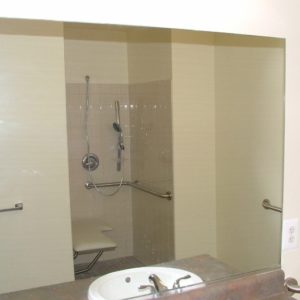Bathroom Renovation – VAMC, Washington, DC
Client: Department of Veterans Affairs (VAMC)
Size: 6,200 SF
Date: October, 2014
Location: Washington, DC
DVC led the design-build renovation of restrooms on the basement, 1st, 2nd and 4th floors of the VA Hospital in Washington, DC. The project improved the patient care experience and provided equal access to all veterans seeking care at the VAMC hospital. This project first involved removing restroom fixtures and overseeing demolition of outdated or damaged building components. DVC then constructed new fixtures and integrated them into the building systems.
DVC implemented effective and necessary dust control and infectious disease (ICRA) measures during construction to prevent any contamination in the adjoining structure. Careful phasing and coordination with the client enabled the project to be completed on time, within budget, and without any discernible negative impact to the hospital’s function.
DC Women’s Shelter
Client: DC Department of General Services (DGS)
Size: 15,000 SF
Date: June, 2014
Location: Washington, DC
LEED: Silver
DVC collaborated with DC Department of General Services (DGS) architects to demolish and reconstruct the 611 N Street Women’s Shelter. The scope of this project originally involved the complete interior and exterior renovation of a two-story, 15,000-SF temporary housing shelter.
The project was redesigned after the discovery of a damaged roof. The building was demolished to the foundation and newly constructed. DVC incorporated numerous sustainable-design features into the project to achieve LEED-Silver certification. DVC identified cost-savings and value-engineering solutions that returned approximately $600,000 to the DC DGS.
Upon completion of the project, the Mayor conducted a formal ribbon-cutting ceremony in acknowledgement of the facility’s importance and in recognition of DVC’s quality construction services.
ADA Compliance Upgrades – DC Shelters
Client: DC Department of General Services (DGS)
Size: 3,200 SF
Date: June, 2013
Location: Washington, DC
DVC completed a design-build approach to install ADA upgrades for two DC homeless shelters. DVC extended an existing canopy structure, changed doorways for wheelchair clearance, modified roof trusses, re-built showers, upgraded bathroom-floor slopes, and installed structural support for grasp bars. The project also included architectural upgrades, repairs to emergency backup generators, replacement of existing elevators, and installation of upgraded plumbing fixtures. Careful phasing and coordination with the client enabled the building’s continuous operation throughout the project.
10 Bed Hospice Addition – VAMC, Martinsburg
Client: Department of Veterans Affairs
Size: 9,000 SF
Date: June, 2012
Location: Martinsburg, West Virginia
LEED: Silver
DVC led the design-build expansion of an existing VA medical center hospice. This ground-up construction project increased the number of private resident rooms for veterans while connecting to an existing building and its existing systems.
The new space was designed specifically to enhance the patient experience through patient-centered and evidence-based design. Some noteworthy features included in-room access to medical information, pharmacy support, and ceiling lifts. These new building systems were incorporated into the existing campus’ utility, alarm, public-address and telecommunications infrastructure.
DVC also enhanced the exterior design by using a brick façade crowned by a floor-to-ceiling glass wall front, double-glazed windows, automatic commercial swing doors, a porch roof and a slab on grade foundation. Among the accents of this addition was a “healing garden” in the courtyard with ADA walkways, ponds, foundations, seating, vegetation, a gazebo, security fence, patio area and external lighting.
DVC implemented effective and necessary dust control and infectious disease (ICRA) measures during construction to prevent any contaminations in the adjoining structure. Careful phasing and coordination with the client enabled the project to be completed on time, within budget and without any discernible negative impact on the adjoining building’s function.








